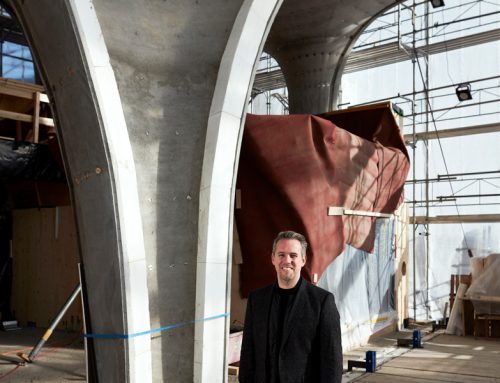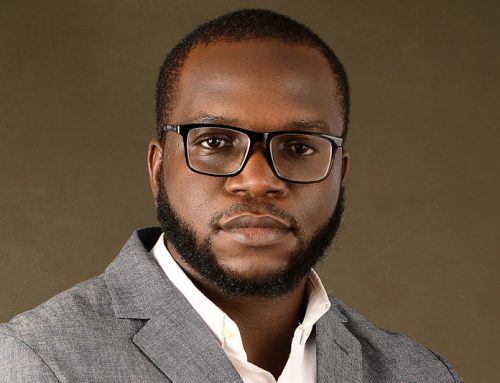 You wake up in the morning, switch on your solar-powered lights, head over to your coffee maker and enjoy a delicious renewable energy beverage. You get dressed in carbon neutral clothes produced by off grid factories and catch the wind-powered underground to your energy-efficient office. A dream? No. Welcome to Masdar City in the United Arab Emirates.
You wake up in the morning, switch on your solar-powered lights, head over to your coffee maker and enjoy a delicious renewable energy beverage. You get dressed in carbon neutral clothes produced by off grid factories and catch the wind-powered underground to your energy-efficient office. A dream? No. Welcome to Masdar City in the United Arab Emirates.
“In Abu Dhabi, the capital of the United Arab Emirates, the leaders of this oil-rich nation are allocating vast revenues from the oil business to establish Masdar City, a prototype renewable energy city. People are already moving in – it will ultimately house 40 000 people – and it is scheduled for completion by 2025,” says dr Mike Seeger who in 2010 spent the year investigating renewable energy projects overseas, and who visited Masdar City. Dr Seeger is a mining engineer who has used his expertise and personal finances earned through his participation in the coal-mining sector to pioneer renewable energy projects for South Africa.
Using the most advanced renewable energy technology in the world the developers are harnessing wind, sun and geothermal energy to provide energy and natural air-cooling for this sustainably built city. Locally sourced, natural clay is being used for bricks, there are no skyscrapers because they are highly energy inefficient, and people will get around in electric motor cars and underground substations, all solar-powered.
“I am originally from Germany and because I still visit there regularly, it opened my eyes as to what is being achieved in Germany and cities like Masdar City in terms of large-scale investment in renewable energy,” says dr Seeger.
“The entire Masdar City will be green. They are not using any fossil-fuel-based energy whatsoever in any part of the city,” says Seeger. The big “wow factor” for him when he visited was to see large scale solar farms, deep level hot dry rock geothermal power plants, waste-to-energy power plants and many other forms of cleantech being tested on an outsize scale at Masdar University, which is part of Masdar City and which opened in 2010.
“Masdar City is about 20% completed, and will be implemented in phases,” Seeger explains. In addition to the university, the city will have a massive commercial hub, which will include a launching hub for the establishment of leading renewable energy and cleantech companies, as well as venture capital funds to finance these ventures. “Cheaper green energy is the name of game. It’s about harnessing nature and making it work financially.”
The whole city is a fascinating experiment in carbon neutral living. If a city that houses 40 000 people can be carbon neutral then bigger cities worldwide can emulate the model. Half of the world’s population already lives in cities, and the trend is accelerating. New energy supplies have to be harnessed.
Also of interest is that unlike Abu Dhabi, which is wall-to-wall skyscraper, in Masdar City they are going back to their roots and incorporating the traditional building methods of the ancient desert communities who made optimal use of light and air flow. Narrow streets, compact mud homes and small windows serve as a sustainable, natural air conditioning system.
Why is this oil rich nation doing this? “Because they are well aware that oil and other fossil fuel resources are finite. They recognise the need to shift to renewable energy and become world leaders in it because renewable energy is the future,” responds Seeger.
In November 2010 in collaboration with Wits University where he studied, Seeger hosted South Africa’s first 3-day implementation-focused renewable energy seminar called ‘Implementing Green Energy Projects in Southern Africa’. Several renowned cleantech companies in the solar and wind energy sectors participated, including Solarworld and Vestas, as well as sustainability professionals, such as architects who design off-grid houses.
“Many African countries do not have coal-based electricity as South Africa does, and they have to look at renewable energy resources such as the sun, wind and biomass waste to generate electricity to meet their development needs,” Seeger explains.
Successful, working models of diverse forms of renewable energy are widely used in Germany.
“I have seen how renewable energy emerged from nowhere in Germany,” says Seeger, describing how in 1999 Germany created a Renewable Energy Act which stipulates that the state has to buy electricity from any renewable energy producer. The Act also provides for guaranteed access to the grid at a guaranteed price for 20 years, and the feed-in tariff is regulated by the government to ensure a fair, guaranteed price.
This put renewable energy on the map in Germany. Anyone with a solar panel, hydro plant or windmill could produce renewable energy, feed it into the national grid and get paid for it. They received special feed-in ‘startup’ rates from the government in order to be able to finance renewable energy systems, large or small. This effectively democratised the energy supply in Germany, which has since started withdrawing the subsidisation because there was such a renewable energy boom.
“Energy cities and villages are now commonplace there, with communities producing their own electricity, supplying their entire village and selling their surplus into the national grid,” explains Seeger who studied how Germany transformed itself from a country with four major energy utilities into a country with a decentralised, open market system of renewable energy production.
At first the major energy utilities opposed the Act and fought the democratisation of energy in the courts, but they soon realised the best approach was to ‘join em’ and incorporated renewables into their mix by building mega solar, wind and energy-from-waste plants, and linking these into their existing portfolio of coal based energy and nuclear power plants.
Recently, Germany has also decided to get rid of all nuclear energy over the next 10-15 years and to fast track renewable energy without becoming uncompetitive. This creates another growth spurt for the major utilities, which will build mega wind farms combined with coal for base-load power to supply the major German cities.
This mix is perfectly suited to South Africa.
“What could put the coal sector on a clean or cleaner footing is if the global industry gets it right to a) clean coal b) capture the carbon emissions from coal and/or c) harness more energy per ton of coal by gassifiying it,” continues Seeger. “This could result in coal-based power plants with much lower emissions. Moving into futuristic scenarios, minerals from the captured carbon could also be used as fertilisers for fish farms, because if you add CO2 to water the fish grow bigger. The prospect of enhancing food security from carbon emissions is a total win-win for the world. The Australian coal sector is highly innovative in this regard.”
South Africa has taken a few good steps forward towards renewable energy but Eskom is slow in acknowledging that the democratisation of energy is imperative. “As happened in Germany, the South African government or Eskom needs to create a fund to finance renewable energy projects and to initially subsidise the feed-in tariff. The significant start-up investment required for renewable energy cannot initially compete with the 30-60c per kilowatt hour currently paid by consumers for electricity-from-coal.”
South Africa’s current electricity need is 40 000 megawatts installed capacity. Of this approximately 1700 megawatts has been assigned to renewable energy providers in the first phase, which will hopefully be on the grid within the next 2 years.
At our current economic growth we are going to need more energy, and a considerable increase in the renewable energy quota. “Big business in South Africa needs to buy into renewable energy on a massive scale, as has happened in Germany and Abu Dhabi,” says Seeger who is currently developing an 11 megawatt (MW) solar farm on the outskirts of Newcastle, together with other project developers and a venture capital fund. The 11 MW installed capacity will be generated from 44 000 solar panels over a 20-hectare area and will be a reference project for further projects to be developed.
As part of the way forward, Seeger believes that mining operations throughout Africa in remote areas will be moving towards energy generation from renewable energy sources. This in turn will stimulate the development of a renewable energy sector in Africa.
“As an idea, mining companies should be compelled to use renewable energy resources to power their mines and to contribute surplus electricity to the communities where they operate in exchange for mining resources,” he says. “Once the minerals have been depleted, what remains is a renewable energy power plant that continues generating sustainable electricity for the surrounding area – a lasting legacy.”
Some mining companies such as Exxaro Resources, a JSE-listed South African-based mining group, are embracing this opportunity and have launched renewable energy divisions. Exxaro have appointed a team with mining expertise to develop renewable energy projects throughout South Africa – from Tsitsikamma to the Northern Cape to the Karoo.
“As a coal-mining industry professional, my attitude is that instead of stalling the renewable energy drive we need to embrace it, be part of it and ensure that South Africa becomes a leader in the low carbon sustainability field instead of dragging our heels,” says Seeger.
Seeger is optimistic about what can happen in Africa in terms of a giant leap for renewable energy. “Africa is unique in that it leapt from vast areas with little or no communication to advanced cell phone communication everywhere. The same can happen with energy, where the continent can leap from zero energy to expansive state-of-the-art renewable energy, with energy hubs delivering not only to the cities but also to remote rural areas that previously had no prospect of power.”




